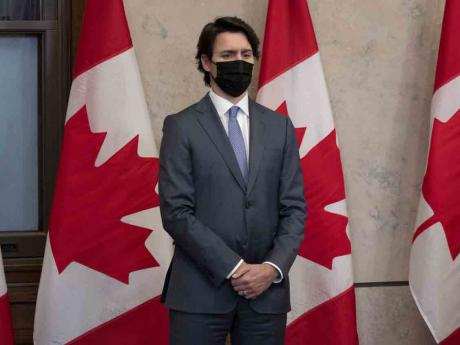The final days of the Donald Trump presidency have come to include a disproportionate amount of attention on the 25th amendment, the constitutional mechanism by which a U.S. president can be forcibly removed from power.
It was all rendered moot by Trump’s January 8th announcement that he would facilitate an “orderly transition” of power. But what happens if Canada should ever be plagued by a rogue prime minister? A head of government who refuses to convene parliament, listen to their cabinet or acknowledge the results of an election? Surprisingly, the Westminster system may not be as prepared for such a scenario as we all would like to think.
First made law in 1967, the U.S. 25 th amendment officially puts the vice-president in charge if the sitting president either dies, resigns or is otherwise “unable to discharge the powers and duties of his office.” The amendment has usually been treated as a kind of failsafe in the event that a president became mentally unfit while in office.
“The thing to be clear is, [in Canada] there is nothing equivalent to the vice-presidential position where there is a clearly delineated line of succession,” Karl Salgo, executive director of the Institute on Governance and a former Parliament Hill procedural advisor, told the National Post .
If Prime Minister Justin Trudeau quit tomorrow, Governor General Julie Payette would probably ask his deputy Chrystia Freeland to take over – but there’s nothing saying Payette would have to. Technically, the Governor General can appoint anybody as prime minister of Canada; the only requirement is that they’re able to command the confidence of the House. If the House of Commons decided tomorrow that Ryan Reynolds was best equipped to man the tiller of our great dominion, he could be sitting in the Langevin Block by week’s end without so much as winning a seat in the House of Commons.
In Canada, transitions of power have usually relied on the cooperation of defeated leaders. When a prime minister loses an election or gets shunted out by their own party, the expected thing for them to do is drive to Rideau Hall and hand in their resignation. The last time this happened was November, 2015, when Stephen Harper stepped down from the top job after the Liberals’ win of a majority government.
But if a prime minister can’t or won’t resign for whatever reason, all the Governor General has to do is appoint another one, which automatically puts the prior officeholder out of a job. When Sir John A. Macdonald died in office of a series of strokes in 1891, his corpse unambiguously stopped being prime minister the moment Governor General Frederick Stanley (of Stanley Cup fame) appointed John Abbott as his successor.
The much dicier proposition is when a prime minister is still alive, but refuses to gracefully step aside. It’s never happened in Canada but “she (the governor general) can remove a prime minister who seeks to govern unconstitutionally,” said Salgo, adding that “the virtue of our system” is that, unlike the United States, the head of government and the head of state are not the same person.
In normal circumstances, prime ministers are removed from power by losing parliamentary confidence votes or by leadership rebellions within their own party. But both of those scenarios rely on a leader willing to voluntarily step down; in extraordinary circumstances a scofflaw prime minister could simply ignore their cabinet, refuse to convene parliament and continue issuing edicts from their executive office.
If the Prime Minister and Governor General were in cahoots we'd be in a bad spot
The real wild card is if an uncooperative prime minister has also managed to corrupt the office of the Governor General. While Governors General are technically appointed by the Queen, for generations Buckingham Palace has simply appointed whoever their various overseas prime ministers recommend. So while unlikely, it’s not inconceivable that a prime minister could simply put a willing confederate in Rideau Hall before going rogue.
“If the Prime Minister and Governor General were in cahoots we’d be in a bad spot,” said Philippe Lagasse, a Westminster expert at the Norman Paterson School of International Affairs. “The system depends on having Governors General who aren’t in league with the Prime Minister.”
One thing protecting Canada from the tyranny of a rogue diarchy, noted Lagasse, is the existence of a permanent public service. While most U.S. federal departments are controlled by political appointees, in Canada these positions are instead filled by non-partisan bureaucrats who might well balk at following orders from a prime minister who has alienated cabinet, parliament and appointed a buddy as Canada’s commander-in-chief.
“If a PM lost the confidence of the House, refused to resign or call an election, the public service could push back far more,” said Lagasse.
The result would be a full-blown constitutional crisis that, ultimately, could only be untied by the Queen herself.
While Buckingham Palace absolutely hates making decisions about governance, particularly in overseas dominions, they might make an exception if a cross-partisan Canadian delegation showed up in London asking them to fire a maniac holed up in 24 Sussex.





Comments